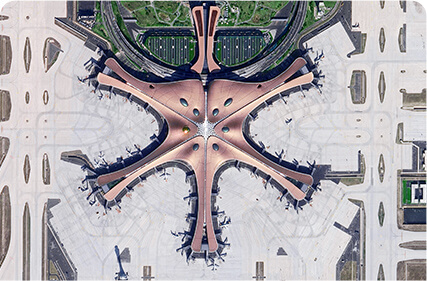English
Remote sensing image processing is the process of using computer image processing systems to carry out a series of operations on pixels in remote sensing images.
Remote sensing images contain a lot of information, which can only be effectively analyzed and content extracted after digitization (sampling and quantization of imaging systems, digital storage). Based on this, further processing of image data, such as aligning coordinates and enhancing object contours, can greatly improve the accuracy of image processing and efficiency of information extraction. This process can all be referred to as "remote sensing digital image processing".
As a basic and important part of the "ground observation" process, in the satellite application industry chain, the satellite remote sensing image processing link is in a crucial position downstream of ground facilities and upstream of specific industries such as agriculture, forestry, meteorology, and natural resources, providing "ready" data services or tools for business applications.
When we see neatly-shaped digital earth products like Google Earth, or thematic maps or interpretation maps of remote sensing satellite applications in fields such as natural resource management, environmental protection, agriculture, and meteorology, they all need to go through intermediate "baptism" of image processing.
Because the remote sensing satellite operates in high-altitude, its imaging environment complexity far exceeds that of our daily ground photo environment, encountering system and non-system factors such as unstable sensors, Earth curvature, atmospheric conditions, lighting changes, terrain changes, causing geometric deformation, distortion, blurring, noise and other anomalies in graphic images.
Remote sensing data center carries out initial processing such as removing striping and rough correction. When the data reaches end users, further refinement processing is required to make it closer to the real world's physical space environment and coordinates, and according to individual business analysis goals, professional processing needs to be done to prepare for the subsequent remote sensing image analysis, interpretation, and business applications.
In general, the main objectives of satellite remote sensing image processing are:
Image correction: restore and recover images. Before extracting information, remote sensing images must be corrected to accurately reflect actual object information or physical processes.
Image enhancement: suppress or remove image noise. To make the geospatial information contained in the remote sensing image more readable, and the target of interest more prominent, easy to understand and judge, the entire image or specific information needs to be enhanced.
Information extraction: based on the spectral and geometric features of objects, determine the rules for extracting various useful object information from the corrected remote sensing data.
